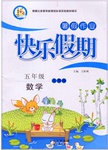题目内容
—What a beautiful day! —Yes, it's ______ that I'd like to take a walk.
A. such nice weather B. so nice a weather
C. such a nice weather D. so nice weather
练习册系列答案
 一诺书业暑假作业快乐假期云南美术出版社系列答案
一诺书业暑假作业快乐假期云南美术出版社系列答案
相关题目
题目内容
—What a beautiful day! —Yes, it's ______ that I'd like to take a walk.
A. such nice weather B. so nice a weather
C. such a nice weather D. so nice weather
 一诺书业暑假作业快乐假期云南美术出版社系列答案
一诺书业暑假作业快乐假期云南美术出版社系列答案